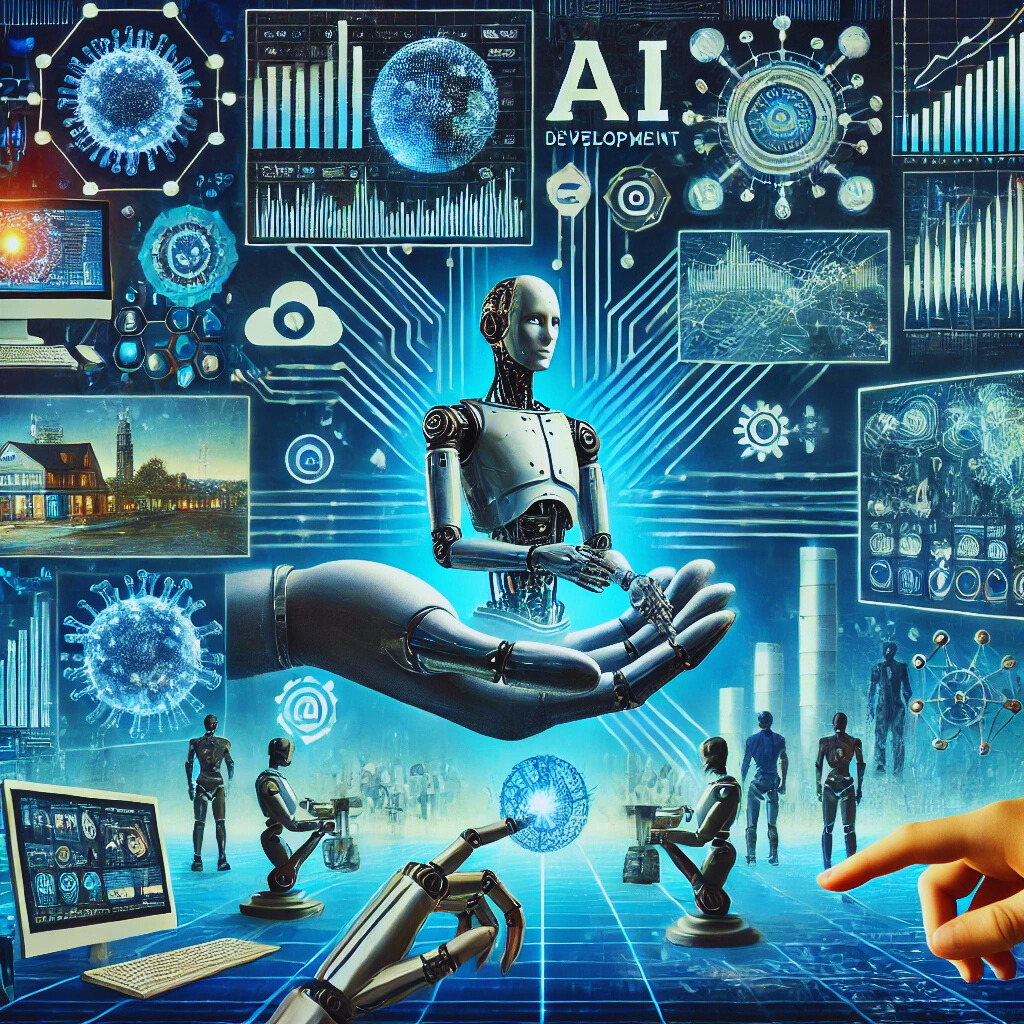AI Development: Transforming Industries and Creating Opportunities
 Gabrielle
Gabrielle
Artificial Intelligence (AI) has transitioned from a theoretical concept to a transformative force across various industries. As organizations strive to stay competitive, the demand for AI development has surged, leading to innovative applications and solutions that enhance productivity, efficiency, and decision-making. This article delves into the core aspects of AI development, its significance, methodologies, and the future it holds.
Understanding AI Development
Definition of AI Development
AI development encompasses the processes and methodologies involved in creating systems that can perform tasks that typically require human intelligence. This includes capabilities such as reasoning, learning, problem-solving, perception, language understanding, and even creativity.
The Evolution of AI
The journey of AI development can be traced back to the 1950s with pioneers like Alan Turing and John McCarthy. Since then, AI has evolved through various phases, including:
Symbolic AI (1950s-1980s): Focused on rule-based systems.
Machine Learning (1980s-present): Enabled systems to learn from data.
Deep Learning (2010s-present): Utilizes neural networks to analyze vast datasets and extract patterns.
Key Components of AI Development
Data: The backbone of AI. High-quality, relevant data is essential for training AI models.
Algorithms: The methods by which machines learn from data, including supervised, unsupervised, and reinforcement learning.
Computing Power: Advanced hardware, such as GPUs and TPUs, facilitates faster processing of complex models.
Frameworks and Libraries: Tools like TensorFlow, PyTorch, and scikit-learn streamline the development process.
The AI Development Lifecycle
1. Problem Definition
The first step in AI development is identifying the problem to be solved. This involves understanding the business needs and defining clear objectives.
2. Data Collection and Preparation
Once the problem is defined, the next step is to gather relevant data. This phase often includes:
Data Sourcing: Collecting data from various internal and external sources.
Data Cleaning: Ensuring the data is accurate and free from errors.
Data Annotation: Labeling data to facilitate supervised learning.
3. Model Selection and Training
Choosing the right algorithm is crucial. Developers must consider:
Model Complexity: Balancing between overfitting and underfitting.
Training Process: Utilizing techniques like cross-validation and hyperparameter tuning to optimize model performance.
4. Evaluation and Testing
After training, models must be evaluated using metrics like accuracy, precision, recall, and F1-score. This step ensures that the model performs well on unseen data.
5. Deployment
Once validated, the model is deployed into a production environment. This involves integration with existing systems and ensuring scalability and reliability.
6. Monitoring and Maintenance
Post-deployment, continuous monitoring is essential. Models may require updates as new data becomes available or when underlying patterns change.
Applications of AI Development
AI development has permeated numerous sectors, revolutionizing traditional processes:
1. Healthcare
Diagnostics: AI algorithms can analyze medical images and assist in diagnosing conditions like cancer with high accuracy.
Personalized Medicine: Machine learning models can tailor treatments based on individual patient data.
2. Finance
Fraud Detection: AI systems can identify unusual patterns in transactions, helping banks mitigate fraud risks.
Algorithmic Trading: AI-driven trading platforms analyze market trends and execute trades at optimal times.
3. Retail
Customer Insights: AI tools analyze customer behavior, enabling personalized marketing strategies.
Inventory Management: Predictive analytics helps retailers maintain optimal inventory levels based on demand forecasting.
4. Manufacturing
Predictive Maintenance: AI models predict equipment failures, minimizing downtime and maintenance costs.
Quality Control: AI systems can inspect products for defects with greater precision than human workers.
5. Transportation
Autonomous Vehicles: AI algorithms enable self-driving cars to navigate and make real-time decisions based on their environment.
Route Optimization: AI tools analyze traffic data to provide the most efficient routes for delivery and logistics.
Challenges in AI Development
Despite its potential, AI development is not without challenges:
1. Data Privacy and Security
As AI relies heavily on data, concerns about data privacy and security are paramount. Organizations must ensure compliance with regulations like GDPR and implement robust data protection measures.
2. Bias and Fairness
AI models can inadvertently learn biases present in the training data, leading to unfair outcomes. Developers must strive for fairness and transparency in their algorithms.
3. Technical Expertise
The demand for skilled AI professionals often exceeds supply. Organizations face challenges in finding talent proficient in AI development and machine learning.
4. Integration with Legacy Systems
Integrating AI solutions with existing systems can be complex and may require significant changes to infrastructure.
The Future of AI Development
1. Advancements in AI Technologies
Emerging technologies like quantum computing hold the potential to revolutionize AI by enabling faster processing of complex problems.
2. Democratization of AI
The rise of no-code and low-code platforms is making AI development accessible to non-technical users, accelerating innovation across industries.
3. Ethical AI
As AI becomes more integrated into daily life, ethical considerations will shape its development. Organizations will need to prioritize responsible AI practices and transparency.
4. AI in Edge Computing
With the growth of IoT devices, AI is moving towards edge computing, allowing real-time processing of data at the source, reducing latency and bandwidth usage.
Conclusion
AI development is a dynamic and rapidly evolving field with the potential to transform industries and create new opportunities. As organizations continue to explore AI’s capabilities, understanding its complexities, challenges, and future trends is essential for successful implementation. Embracing AI development responsibly can lead to significant advancements that benefit society as a whole.
Subscribe to my newsletter
Read articles from Gabrielle directly inside your inbox. Subscribe to the newsletter, and don't miss out.
Written by

Gabrielle
Gabrielle
As a passionate blockchain enthusiast and NFT writer, I delve into the exciting intersection of technology and art. My work focuses on exploring the unique synergy created by decentralized platforms, where creativity and innovation thrive in new digital landscapes.